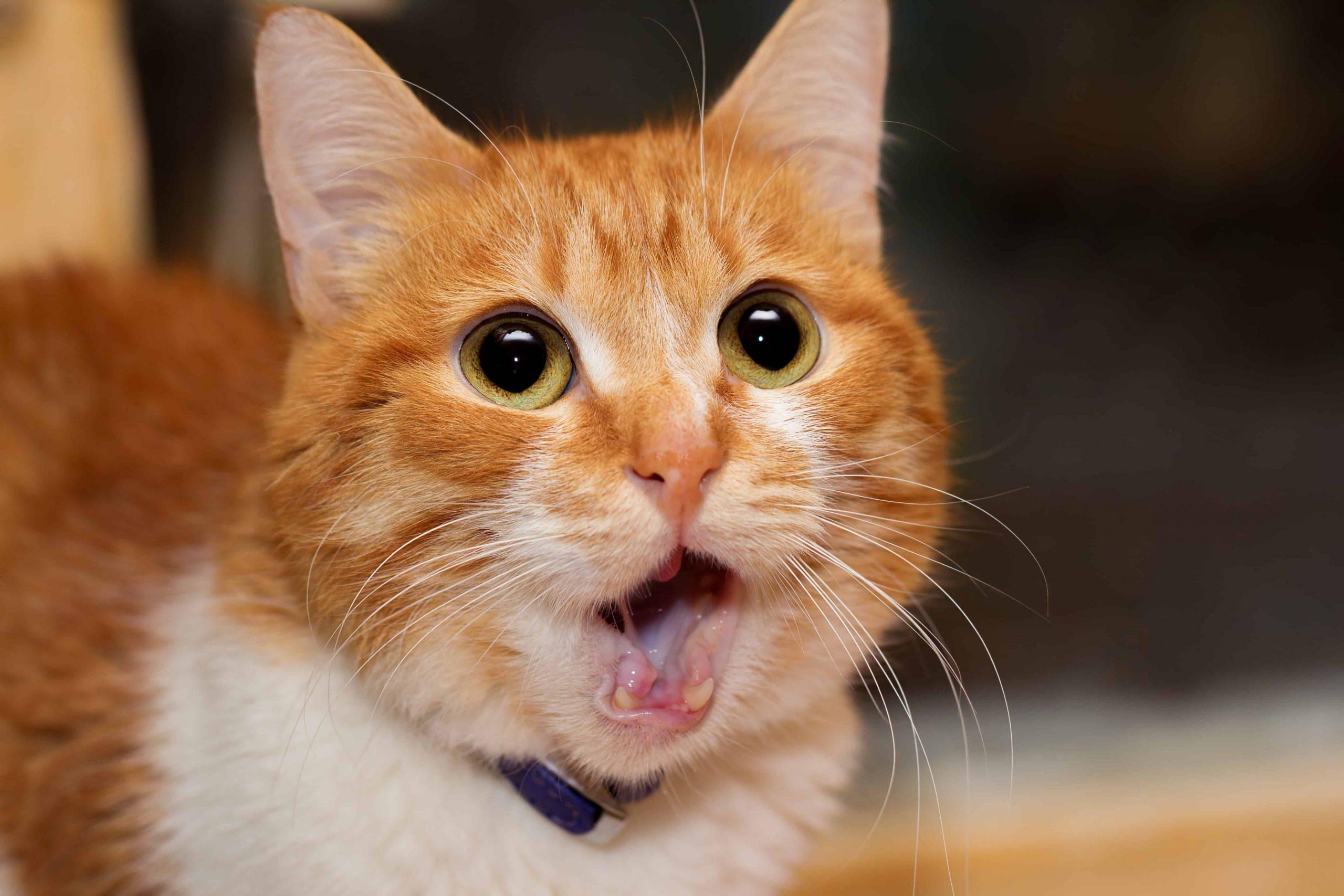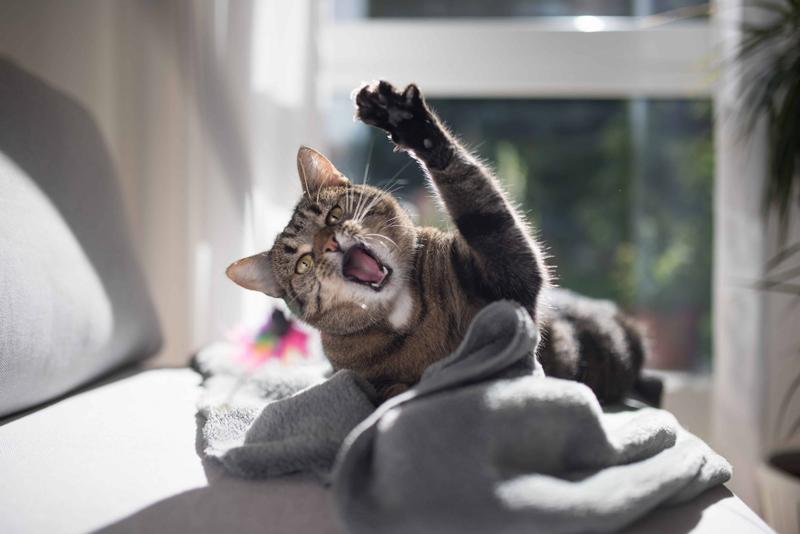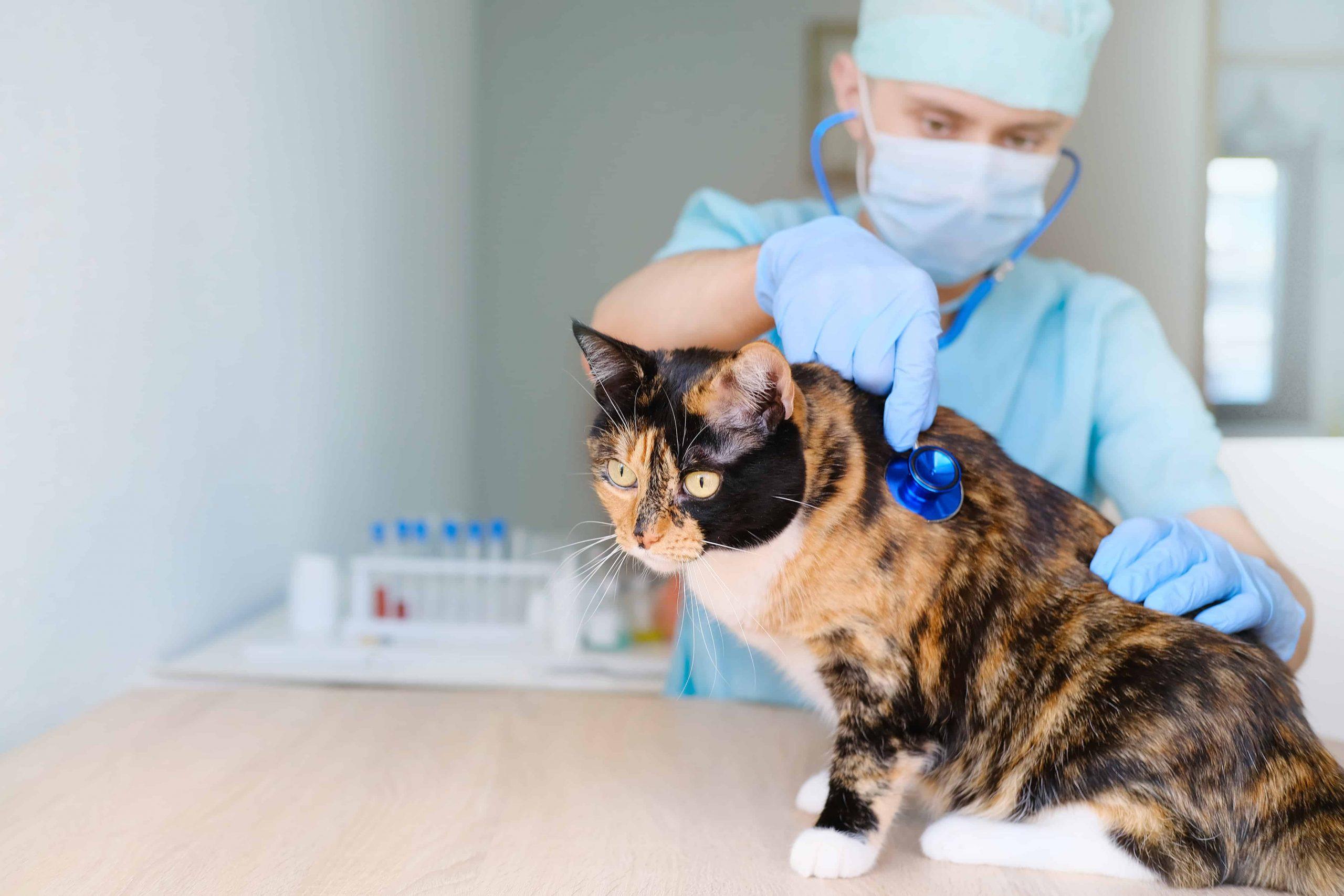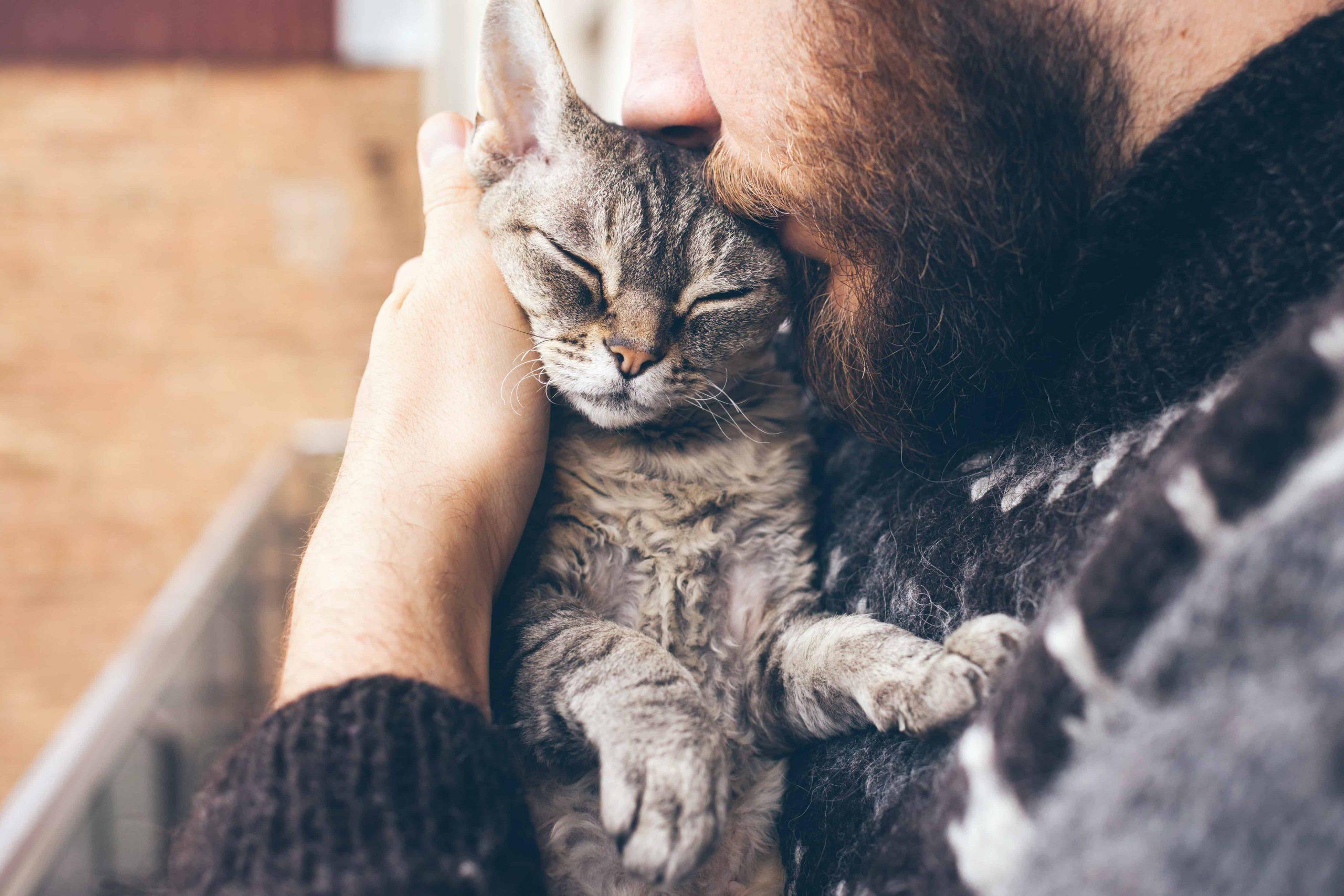It’s natural for your heart to jump into your throat the first time you see your beloved kitty having a seizure.
Feline seizures are a scary sight to behold, especially if you don’t know what triggered the convulsions.
We explain what to do when your cat has a seizure, so the experience is less stressful for your pet. This information will ease your mind and empower you to support your cat in the best way.
But first, let’s explain what a feline seizure is, so we’re all on the same page:
Seizures in cats occur when the brain is disturbed by an uncontrollable electrical impulse. A multitude of factors cause this abnormal brain activity, which temporarily distorts communication with the rest of the body – leading to a single fit, clusters of seizures over a short period or recurring fits that keep coming back over time.
Treatment of seizure in cats
The first step is always to stay calm. Your priority is to make sure your furry friend doesn’t hurt himself (or others) by falling from a high location (such as stairs and windows) or knocking into something dangerous.
- Leave your cat in the same position if there are no hazards. You can put cushions around her if you’re worried.
- If there are hazards nearby, pick up Kitty with a thick towel and place in a safe position.
- Keep other animals away from the convulsing cat, as sometimes other pets will attack because they feel threatened.
- Make sure all doors and escape routes are closed, as pets may run away after seizures (due to being temporarily bewildered and not recognising their owner or surroundings).
- Be mindful that your cat is unaware of thrashing around wildly. You could get scratched or bitten if you don’t approach with care. Keep children away too.
Feline seizures generally last for a few minutes or less, and don’t reoccur over the next few hours or days.
More often than not, these isolated cases aren’t medical emergencies and there’s decent recovery.
Having said this, you should always seek veterinary advice, even after short seizures. If your usual vet isn’t available, visit an emergency veterinary clinic.
Does the seizure last for longer than 5 minutes, even if there’s only one?
This is a medical emergency and urgent veterinary care is required to prevent organ damage, other injuries and sometimes death (very rare). If your cat hasn’t stopped convulsing, use a thick towel to wrap her up and head to the vet.
Are there multiple seizures over a short period (such as a few hours or days)?
These are called cluster seizures, visit your vet as soon as possible so they can diagnose and treat the problem.

Signs of seizures in cats
Seizures are generally categorised as either focal (partial) or generalised.
Focal (or partial) seizures are most common in felines. This happens when excessive amounts of electricity are generated in a small part of the brain (one hemisphere). It creates a convulsion in only one part of the body, so it’s harder for humans to detect.
Signs of focal seizures in cats:
- Drooling excessively
- Confusion
- Twitching limbs, eyelids or side of face
- Moving the head and neck in strange ways or gazing into space
- Aggressiveness
- Strange behaviour, like running around a lot, tail chasing or snapping jaw at the air
- Loud vocal noises
- Frequent swallowing
- Urination and defecation (losing control of these functions)
- Dilation of the pupils
Cats generally don’t lose consciousness in these scenarios, but in some cases the fits may become more generalised.
Generalised seizures are less common in felines, but impact the entire brain and body when they do occur.
Signs of generalised seizures in cats (also called grand mal seizures):
There may be warning signs just before the grand mal seizure occurs. This is called pre-ictal behaviour:
- Pacing or circling around
- Vomiting
- Yowling or whining
- Nervousness
- Hiding
- Unusual clinging to humans
During the generalised seizure:
- Unconsciousness
- Convulsing
- Uncontrollable shaking in all four limbs
- Facial twitching
- Excess drooling
- Vocalisation sounds strange
- Jerking around
- Running around
- Feet paddling
- Urination and defecation (loss of control)
- Head can look as though it’s bent backwards
Cats are usually disoriented after the seizure. Post-ictal symptoms include:
- Confusion
- Pacing around
- Temporary blindness (rare)
- Temporary paralysis in limbs
- Vomiting
- Behavioural changes
Your cat may seem “off” for a few days, but this is generally temporary (thankfully).
What can trigger a seizure in a cat?
There are many different reasons why a cat starts convulsing. The trigger can either come from inside or outside the skull. Feline seizures are generally caused by disease, toxins or injury from a trauma that impacts the head. In many cases, the seizure is a belated response to damage that has previously occurred in the brain.
- Injury to the brain due to head trauma
- Ingesting toxins, poisons or human medication
- Low blood sugar
- High fever
- Epilepsy
- Kidney or liver disease
- Meningitis
- Tumours in the brain
- Inflammation of the brain or spinal cord
- Heart disease
- Infections
- Hypoglycaemia
- Feline leukaemia
Can cats die from seizures?
Yes, but this is very rare.
When such a tragedy occurs, it’s generally caused by injuries that happen while the cat is convulsing (especially if there’s trauma to the head).
This risk factor rises for seizures that happen frequently. In some cases, untreated seizures can damage organs and lead to death, especially if there’s a serious underlying trigger that hasn’t been diagnosed by a vet.
The good news is that most cats recover well from a seizure after receiving suitable veterinary treatment.
Treatment of feline seizures in cats
In most cases, cats have stopped convulsing by the time they’re taken to the vet. If a cat is still having the seizure, the vet will administer medication to stop the convulsions, before starting an examination. This diagnostic process usually involves taking blood and urine samples, as well as X-rays.
Sometimes recurrent seizures happen but no underlying causes can be identified. This is often diagnosed as epilepsy, and there’s usually no medication for this.
On the other hand, seizures that occur frequently or last for more than five minutes are generally treated with anti-convulsants like phenobarbital for an extended period (sometimes for Kitty’s entire life).
If an underlying condition has been diagnosed, the approach will be different. For example, steroids may be administered for a brain tumour that is surgically removed.
How to prevent seizures in cats
Most of the time you can’t prevent a seizure from occurring, especially when there’s no clear diagnosis. In these cases, your best option is to provide a safe environment for your cat to convulse and then get veterinary advice (if you haven’t already seen a vet for this issue).
Having said this, seizures that are caused by toxins can be prevented by making sure that all medications, chemicals and cleaning products are securely stashed away. This applies to essential oils too, many of which are poisonous to cats.
This is important advice for “pawrents” of cats AND dogs:
Please don’t ever be tempted to give dog medication to your cat. For example, you may think that using the same flea product is harmless, but it’s actually so dangerous. Feline toxin seizures are often caused by canine medications, as cats and dogs react differently to ingredients.
On a final note, you can lower the risk of your cat developing seizures by looking after their general health:
Cats that have obesity or diabetes are more likely to suffer from seizures. Feed your cat a balanced diet that contains plenty of omega-3 fatty acids and antioxidants. This helps to keep their weight within a healthy range too! Ask your vet for advice on the best foods for your cat.
Potiki cat insurance for feline seizures
Pawrents with reliable pet insurance don’t have to worry about finding the money to pay for vet fees. Their policy covers most of the costs (as long as it’s not a pre-existing condition).
Potiki’s affordable pet insurance gives you that peace of mind, but we go one step further….
We also send you free Potiki Perks to help you take care of your beloved’s general health needs (such as tick prevention).
All customers get access to Potiki Perks#. Potiki Perks# comes with the free Potiki Perks app offering exclusive offers, 2-for-1 deals, and up to 20% off in categories like dining, activities, shopping, travel, and more. You will also have access to myPetPass™** which unlocks extra support and savings on everyday pet essentials such as online vet care, discounted pet prescription medication and savings on premium pet food.
This is on top of reliable pet cover that pays for 80 per cent of your eligible vet bills for unexpected illness and injury.
- Get a quick Potiki quote to find out what your premium will cost for one year.
- Submit payment if you’re satisfied with that amount (email us on [email protected] with any questions).
- Log into your personal portal to select items for your Potiki Perks package, which will be swiftly delivered to you.
- Lodge a claim if you need help paying vet bills for unexpected sickness or injury.




